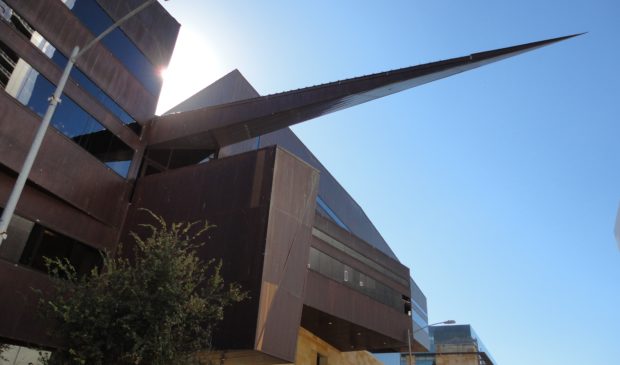Watching Legislature, city delays financial forecast
Friday, May 3, 2019 by
Jo Clifton Without final action on the property tax bill moving through the Texas Legislature, Austin budget planners are holding off on presenting the city’s financial forecast to City Council. At this point, however, legislative watchers expect final passage of SB 2, the bill that would put a 3.5 percent cap on the amount of revenue cities and counties could raise beyond what they brought in the previous year – unless they call an election to approve a larger increase.
The current cap is 8 percent. Last year, the city raised the effective tax rate by 5.4 percent.
If the Legislature approves the 3.5 percent cap as expected, the law will not take effect until Jan. 1, 2020. That will give cities and counties time to plan.
Deputy Chief Financial Officer Ed Van Eenoo has been carrying a message about the city’s budget plans and concerns to boards and commissions. In prior years, Van Eenoo has provided Council with a forecast in mid-April or May. The Legislature does not adjourn this year until May 27, so we should not expect that forecast until June.
According to Van Eenoo’s projections, the city would need a minimum revenue cap of 5.5 percent just to balance the budget.
As outlined in a memo City Manager Spencer Cronk sent to all city employees last September, the city is determined to hold the line on budget increases other than built-in cost drivers such as wages and benefits.
But with public safety contracts dictating yearly wage increases for those employees, as well as the need to increase base pay for non-public safety employees, Mayor Steve Adler has made it a point to tell anyone who will listen that the legislative proposal will put Austin in deep financial trouble.
Adler has been particularly vocal about the detrimental impact a 3.5 percent cap would have on the city. This number would not allow the city to keep up with inflation and continue the same level of support for city employees’ insurance, he has said.
Council Member Jimmy Flannigan agrees. He laughed, but was not entirely joking when he told Austin Environmental Democrats last week, “The world is on fire and we’re all doomed.”
“The tax cap thing is really scary. … At the bottom line, 70 percent of our budget is public safety. The costs for public safety rise between 5 and 6 percent per year because of our contract with public safety unions,” he said. In response to a question from the audience, Flannigan said growth is a separate question and it’s important that the two issues remain separate.
“Just the contracts we have now with the officers and firefighters and EMS goes up like to 6 percent every year because that’s what it takes to recruit and retain new officers and firefighters and paramedics.” The city always has to recruit new public safety employees because some are always retiring or leaving the force. There are other reasons why the 3.5 percent plan doesn’t work, Flannigan said, but the public safety contracts alone are enough reason.
Flannigan further explained that while half of the city budget is funded by revenues from Austin Energy and the sales tax, those revenues only increase about 2 percent a year. “So you need 5 to 6 (percent) just to keep the first responders that you have.” If the other revenues only increase 2 percent, he said, the property tax half of the revenues must increase substantially more than 3.5 percent in order to keep up with employee wages.
Former Council Member Ellen Troxclair, who advocated for lower property taxes during her four years on Council, disagreed with Adler and Flannigan. She told the Austin Monitor via text, “I don’t know anyone who expects to receive an 8 percent raise every year, except for the city of Austin. Adjusting the maximum tax rate is something that hasn’t been done in four decades, when we were experiencing double-digit inflation, and is long overdue.
She added, “This bill resets this rate to be more in line with people’s ability to pay, and residents and businesses across the city and state will benefit. Austin taxpayers desperately need the protection that comes along with their ability to have a direct vote in any property tax increase over 3.5 percent, and I’m excited that we are one step closer to this critical reform.”
In his memo to all employees last year, Cronk wrote, “We were fortunate to have the available funds to invest in many of the strategic priorities this year, but we cannot count on this in future years. As a result, the city’s dedication to continuous improvement, effectiveness, and efficiency become even more crucial. I encourage each of you to seek out opportunities to streamline work and identify cost savings without sacrificing our dedication to high levels of customer service.”
Last year, the budget staff suggested that the best way for Council to brace for a major blow to its taxing powers would be to raise taxes as much as possible for the current year and then put as much of that money as possible into a rainy day fund. But that didn’t happen.
Photo by M.Fitzsimmons [CC BY-SA 3.0], via Wikimedia Commons.
The Austin Monitor’s work is made possible by donations from the community. Though our reporting covers donors from time to time, we are careful to keep business and editorial efforts separate while maintaining transparency. A complete list of donors is available here, and our code of ethics is explained here.
You're a community leader
And we’re honored you look to us for serious, in-depth news. You know a strong community needs local and dedicated watchdog reporting. We’re here for you and that won’t change. Now will you take the powerful next step and support our nonprofit news organization?










